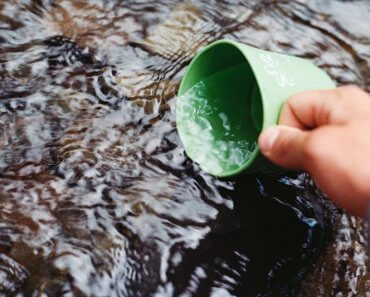Climate change models and population growth point to increasing scarcity of fresh water supplies, but new research suggests that desalinating brackish groundwater could help relieve the issue.
Conducted by MIT researchers, the study provides an in-depth analysis on the amount of energy required to desalinate various compositions of brackish groundwater and its potential uses in both the U.S. and abroad.
The research is published in the journal Water Research.
What is brackish groundwater?
Brackish groundwater is water that contains more salinity than freshwater, but not as much as seawater.
The amount of brackish groundwater in the U.S. is about 800 times greater than the total amount of groundwater withdrawn nationwide, yet less than one percent of the nation’s water supply comes from this source. Instead, about a fifth of the U.S. drinking water comes from fresh groundwater.
But according to the researchers, using even a fraction of the abundant brackish water in the U.S. could dramatically improve the prospects for water-starved communities.
“The U.S. has more brackish groundwater than fresh groundwater. And much of the world’s fresh groundwater is being heavily used, to the point that many fresh water aquifers are showing signs of decline,” said John Lienhard, director of the Abdul Latif Jameel World Water and Food Security Lab at MIT.
Until recently, however, brackish groundwater has been a largely overlooked resource.
Investigating a new water source
The research began in 2015 when Lienhard met a scientist from the U.S. Geological Survey (USGS) at a conference and learned about the agency’s collection of more than 100,000 groundwater samples from wells.
“I was fascinated, and I wondered what we know about how the composition of groundwater affects the desalination process,” Lienhard said in a statement.
He discussed the question with Yvana Ahdab, an MIT graduate student and co-author of the paper, who researched it and found that, while there have been numerous analyses on seawater composition around the world, there were no comparable studies for groundwater.
This is likely due to the fact that the composition of groundwater varies more widely than seawater, in both salinity and the concentration of other substances such as calcium and sulfate.
Regardless, the researchers set out to analyze the USGS dataset and understand how brackish groundwater composition could affect desalination.
Analyzing compositions
Seawater is the main source for existing desalination systems, so the technology has mostly been developed and tuned for seawater’s compositions.
And since brackish water is so different, the researchers were interested in looking at the theoretical limits of how possible it would be to reduce the energy required to desalinate brackish water that has a particular composition.
Using thermodynamics, a science that deals with the relationship between heat and energy, the researchers studied how different compositions of brackish groundwater would affect the energy needed for desalination.
“Thermodynamics allows us to study how different mixtures of salts affect the energy needed to separate fresh water from salt water,” said Lienhard. “This thermodynamic modeling tells us the minimum possible amount of energy needed — as if we had a perfectly efficient desalination system. We also looked at the numbers for real hardware so that we could gauge the room for technological improvement.”
The researchers found that the compositions fall into five classes: some are dominated by sodium chloride, sodium bicarbonate, or sodium sulfate, while others are dominated by calcium bicarbonate or calcium sulfate, they explained.
They determined that groundwater dominated by sodium require greater energy to desalinate than those dominated by calcium, while those dominated by chloride require more energy than those dominated by sulfate.
Additionally, the researchers found that a big advantage of desalinating brackish groundwater rather than seawater is the recovery rate. Seawater desalination typically yields half its volume in freshwater, but desalination of brackish water can yield up to 90 percent freshwater, according to the researchers.
Analyzing locations
After analyzing compositions, the team also mapped out the locations of potentially usable brackish groundwater sources in regions that are experiencing the greatest stresses on water supplies.
The results point to many locations, including Southern California, Arizona and areas of the Upper Midwest.
Though the most complete dataset was based on U.S. wells, the team also examined other sets of samples from regions in Asia, Australia, Europe, North America and South America, and found that the U.S. trends of treatable brackish water are likely replicable in most parts of the world.
Conclusion
The information on brackish groundwater compositions, coupled with maps of brackish groundwater sources across the country, can help guide plans to develop new water resources, the researchers believe.
The researchers are continuing to study brackish groundwater, and hope that the resource will soon be used as a means to expand freshwater supplies.
“Growing population and a warming and more variable climate poses unprecedented challenges for our cities, farms, and industry,” said Lienhard. “Sustainable use of brackish groundwater, through desalination, can help expand our freshwater supplies. This approach can be one component of an integrated water management strategy for the many parts of the world threatened by water scarcity.”




